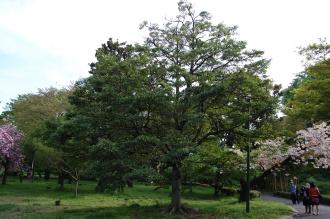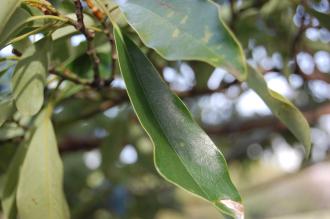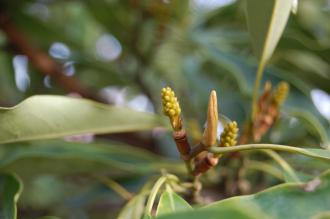
Magnolia compressa (18/04/2015, Imperial Palace East Garden, Tokyo, Japan)
Position: Full sun to partial shade
Flowering period: Spring
Soil: Moist, well drained
Eventual Height: 13m
Eventual Spread: 10m
Hardiness: 9a, 9b, 10a, 10b, 11
Family: Magnoliaceae

Magnolia compressa Leaf (18/04/2015, Imperial Palace East Garden, Tokyo, Japan)
Magnolia compressa is an evergreen tree with a rounded habit. Its dark green leathery leaves are elliptic with entire margins, up to 7cm long and 3cm broad. Its trunk may achieve a diameter of up to 1m. Its grey/ brown bark is smooth. Its fragrant pale yellow/ white flowers are up to 5cm across.
Magnolia compressa, commonly known as Michelia, is native to south Japan and Taiwan. In its native habitat it grows in broadleaved forests. Magnolia compressa is synonymous with Michelia compressa.

Magnolia compressa Seed (18/04/2015, Imperial Palace East Garden, Tokyo, Japan)
The etymological root of the binomial name Magnolia was named after Pierre Magnol, a 17th century French botanist. Compressa is from the Latin menaing ‘narrow’.
The landscape architect may find Magnolia compressa useful as an evergreen spring flowering specimen shrub. It may be used as a flowering hedging species. It prefers a sheltered location.

Magnolia compressa Bark (18/04/2015, Imperial Palace East Garden, Tokyo, Japan)
Ecologically, Magnolia compressa flowers are attractive to bees and pollinating insects.
Magnolia compressa prefers moist, humus rich, well-drained soils. It prefers a neutral to acid pH of soil.
Magnolia compressa requires little maintenance. Any necessary pruning should be carried out after flowering.

Landscape Architecture

